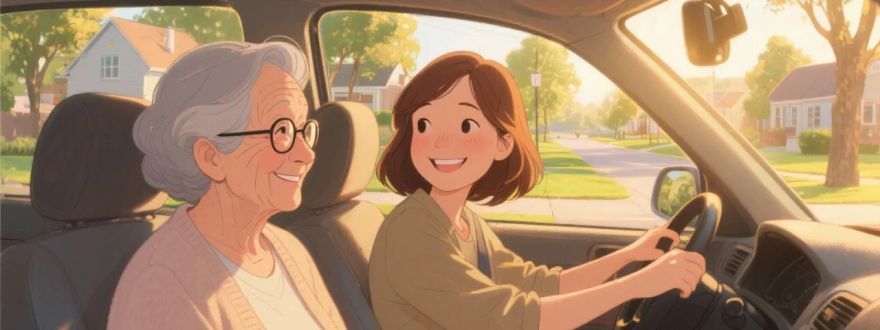
“Mom, Can We Talk About Driving?” A Story About Safety, Independence, and What Comes Next
Last spring, one of our longtime clients—let’s call her Mrs. R—came in with her daughter. Mrs. R has been with our agency since before her minivan hauled soccer gear and snack packs. Now, she drives to morning walks at the park and lunch with friends. The question on both their minds wasn’t about premiums or paperwork. It was simple and heavy: “How do we know if it’s time to stop driving?”
They told me about a recent close call at a tricky left turn. Nothing happened—thankfully—but Mrs. R admitted she’d felt “foggy” in the moment. Her daughter had noticed other small things: a missed stop sign, a late brake, a new tendency to avoid night driving.
We didn’t rush into answers. Instead, we talked about a plan.
Step 1: Start with a real conversation
We sat together and reframed the topic from “losing the keys” to “staying independent safely.” That shift matters. For many older adults, a car isn’t just transportation—it’s autonomy, spontaneity, dignity. Approaching the conversation with respect keeps doors open.
I suggested they set a shared goal: “Let’s keep you mobile, connected, and safe.” From there, decisions feel less like a loss and more like a thoughtful transition.
A few guiding questions we used:
- What specific situations feel stressful now (left turns, night driving, highways)?
- Are there recent near-misses or changes in confidence?
- What do family members see from the passenger seat?
Step 2: Check skills, not just confidence
Confidence is valuable—but skills keep you safe. We recommended a driving evaluation with an occupational therapist who specializes in driver rehab. These evaluations look at vision, hearing, reaction time, mobility, and decision-making, then include an on-road assessment in familiar neighborhoods. It’s practical, respectful, and focused on solutions.
For Mrs. R, the therapist recommended:
- Avoiding rush-hour and night driving
- Adding a wide-angle mirror
- Practicing specific tricky intersections with a coach
- A re-check in six months
Not a stop sign—more like a yield.
Step 3: Adapt before you retire
Retiring from driving isn’t an event; it’s a slope. Many clients do well with modest adjustments:
- Route planning: familiar roads, fewer left turns, right-turn loops
- Tech support: navigation with voice cues, ride-share apps on speed dial
- Car tweaks: additional mirrors, clearer labeling on controls
- Rules of thumb: no night driving; no drives longer than 30 minutes without a break; avoid heavy rain
These small moves buoy confidence and reduce risk.
Step 4: When it is time to stop, make it a handoff—not a cliff
Six months later, Mrs. R came back with a different tone. “I think I’m ready,” she said. No crisis. No incident. Just a decision.
We mapped out daily life without a personal car:
- Standing ride-share times for weekly commitments
- A simple “call list” for family backup
- A monthly budget line for transportation (to replace gas and maintenance)
- Community options for errands and appointments
She was surprised to find how little changed about her social life once the plan was in place.
Where our agency fits in
Conversations like this are why we love being more than “the people you call when something breaks.” We can help you:
- Adjust your policy as driving habits change (fewer miles, named drivers, vehicle changes)
- Explore potential discounts for safe-driving courses where available
- Clarify coverage if a family member starts doing more of the driving
- Transition to non-owner or alternative coverage if you give up your vehicle
- Align your insurance with rideshare use or community transport
Every situation is unique. Our role is to make sure your coverage matches your real life—today and as it evolves.
A gentle checklist for families
Use this as a conversation starter, not a verdict.
- Lately, have you felt overwhelmed by complex intersections or left turns?
- Any new scrapes, curb bumps, or near-misses?
- Do you avoid night driving or highways now?
- Any changes in vision, hearing, medications, or reaction time?
- Has a passenger expressed concern more than once?
If two or more resonate, consider a professional driving evaluation and a family plan.
The heart of it
“Everyone has a driving life expectancy.” That line stuck with me. For Mrs. R, letting go of the keys didn’t close a door. It opened others: predictable rides, less stress, and more energy for the things she actually wanted to do.
If you’re standing at this crossroads—whether for yourself or someone you love—we’re here to help you navigate with care, practicality, and dignity.
Want to talk it through? Reach out to our team. We’ll listen, help you map options, and make sure your insurance fits the road you’re on—even if that road looks a little different than it used to.

